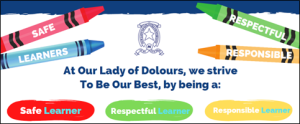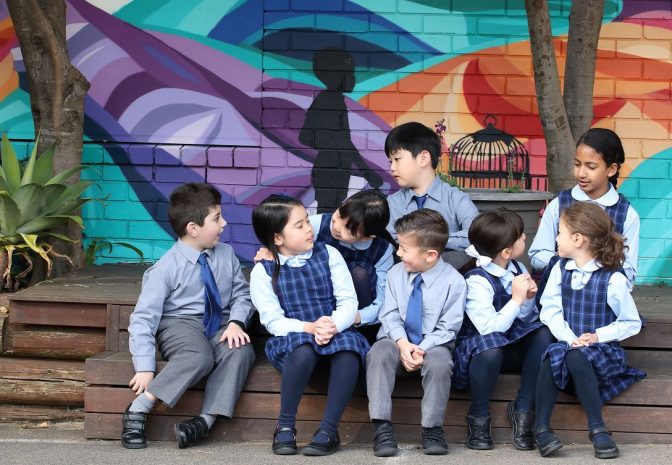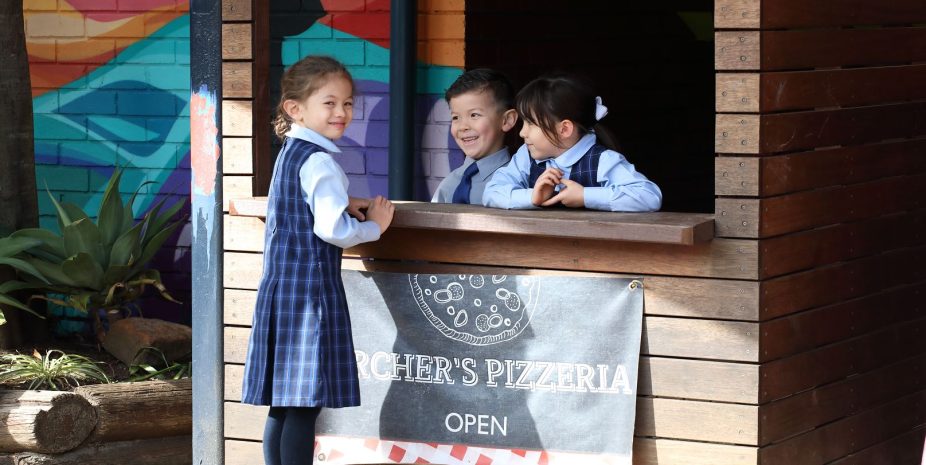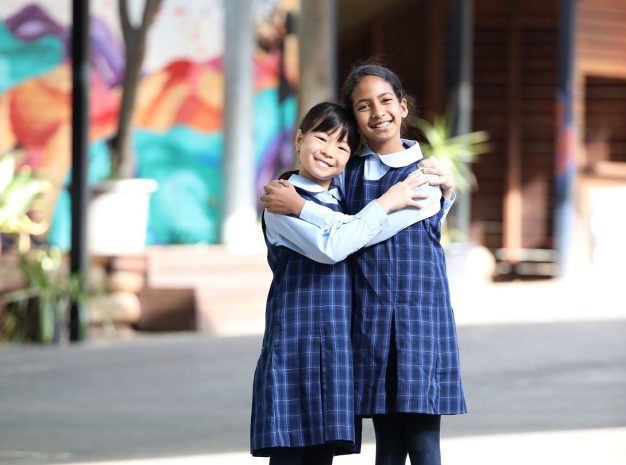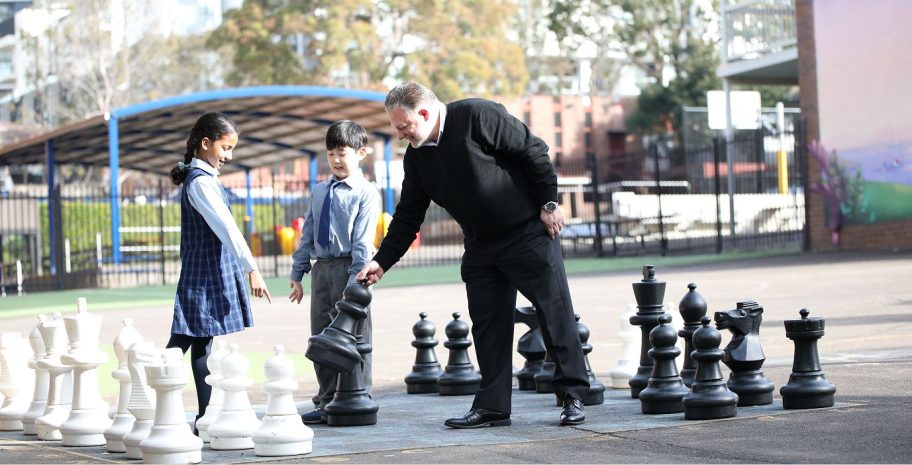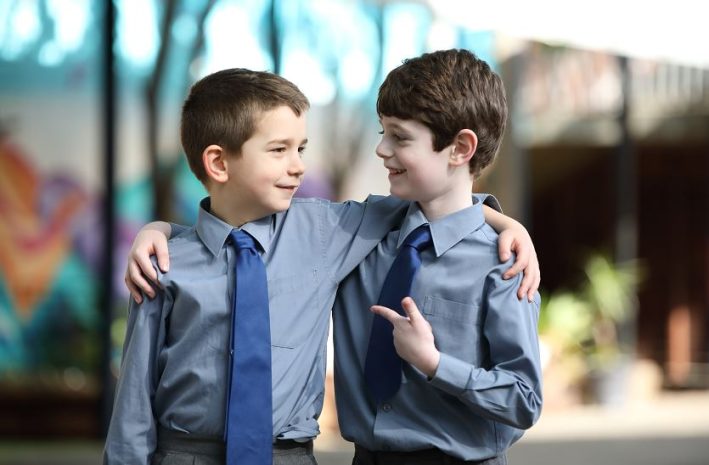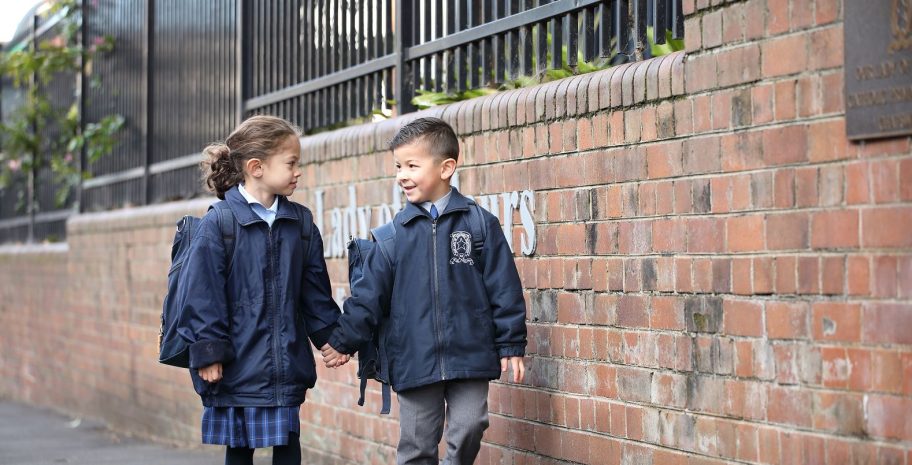Students at Our lady of Dolours enjoy rich and diverse learning experiences with our focus being on creating learning environments that are unique and allow for different learning styles. We have been involved in a number of research projects that have enhanced student outcomes and implemented a range of new initiatives across the school. Our Learning spaces allow for modern teaching, and we are continually upgrading and developing our resources and facilities to best support contemporary learning.
EARLY YEARS
The school focuses on educating children in the early years of primary school (Kinder to Year 2) by providing engaging and inspiring learning experiences which acknowledge each child, their families and the life experiences they bring.
The early years are an opportune time where primary educators take an active role in the young learner’s construction and acquisition of learning and understanding. This is a time when school communities are able to carefully nurture and guide the child’s intellectual, emotional, physical, social and spiritual potential.
VISION FOR LEARNING
Staff, students and parents are engaged in a process where we look at our past, so as to look towards and build our future. In creating a vision for learning we have a common pedagogy or understanding of the approach taken to provide learning. Having a school wide vision for learning needs to be owned and valued by all stakeholders.
Our vision for learning is to ‘Empower Every Student” to be the best that they can be providing a teaching and learning framework that is relational, diverse, contemporary and adaptive.
More on our Vision for Learning can be found here
STAGE LEARNING
The NSW curriculum is developed in stages rather than yearly grade levels. With exception to Early Stage One (Kindergarten), each stage consists of 2 years of curriculum outcomes that students work towards over a two-year cycle.
At Our Lady of Dolours all students work collaboratively as a stage. The aim of this approach is to provide a consistent teaching program with a collaborative teaching model to benefit all students. Students in stages 1, 2 and 3 may work in flexible groupings for literacy and numeracy as well as in other Key learning Areas.
This mode allows greater scope to meet student’s identified needs and learning styles, and to cater for this appropriately within their learning environment. The approach is consistent with modern pedagogy, teaching practices and builds greater independence and preparation for high school in the senior grades.
STUDENT LEADERSHIP
As important members of the school community, students are valued for the contributions they can make to the school. Student voice is an important aspect of school life and students are encouraged to be part of a number of programs that enable them to show leadership.
When students are trusted with responsibilities their confidence and independence are enhanced and heightened. The Year 6 students are all part of a school leadership team for their final year of primary school. Throughout the year the teams work with teacher mentors to create, plan and implement new initiatives to make a difference in their school.
Student leadership is encouraged and supported through the following teams:
- School Captains and Vice Captains
- Sports Captains
- Environment LEaders
- ICLT Leaders
- Literacy Leaders (Library monitors)
- Mercy Action Leaders
- Wellbeing Leaders
- Buddy Program
INNOVATION STATION
The Innovation Station is located directly off the main playground and houses our Library and Studio. This area has been developed to provide a 21st Century learning space that combines a modern Library and studio are that students can use as a performance space, television and recording studio.
The library area is available for students during recess and lunch on a rostered system and is utilised as a passive play area for students who may find the playground difficult. The library area is also used for staff professional development, parent workshops and meetings. All students attend weekly Library lessons with our Specialist Teacher Librarian.
The studio is equipped with lighting, green screens, audio visual editing and recording facilities.
POSTIVE BEHAVIOUR FOR LEARNING (PBL)
WHATIS POSITIVE BEHAVIOUR FOR LEARNING (PBL)?
Our Lady of Dolours follows the principles of the PBL (Positive Behaviour for Learning) Framework. The purpose of PBL is to teach appropriate and positive behaviour to create a climate of co-operation, academic excellence, respect and safety.
PBL is a whole school program which focuses on the expectation of being learners who are safe, respectful and responsible. Each fortnight a new expected behaviour is the focus. This particular behaviour is taught and modelled to the students and by the students.
Students are rewarded for meeting the expectations by earning PBL Points for their colour house. They can receive PBL Points inside and outside of the classroom for meeting the school expectations. When students do not meet the school expectations, teachers work with them to reflect, learn and develop the skills needed to demonstrate more positive behaviour.
The school has developed a common set of expectations (school rules) that we all follow so that there is a consistency for all students regardless of the year level.
PBL POINTS
Individual students receive PBL Points for demonstrating behaviours that are safe, respectful and responsible both in the classroom and on the playground in response to expected behaviours taught.
Students tally points across the school for each of the four colour houses. Progress of each colour house is ackinowledged at the start of each week at the Monday afternoon assembly, with the winner announced at the end of each term. Students in the winning colour house receive a small prize as a reward.
